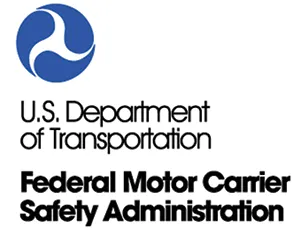Senior Reporter
FMCSA Leader Highlights Recruitment Efforts Targeting Women

[Stay on top of transportation news: Get TTNews in your inbox.]
An advisory board focused on women entering the trucking workforce is among recruitment programs meant to tackle a driver shortage industrywide, the nation’s top trucking regulator said recently.
Appearing before a House policy committee on Dec. 13, Federal Motor Carrier Safety Administration leader Robin Hutcheson amplified ongoing contributions stemming from the advisory board. The FMCSA leader acknowledged recruitment and retention efforts, which saw a boost from 2021’s Infrastructure Investment and Jobs Act, are central to enhancing safety and supply chain connectivity.
Mandated under the bipartisan infrastructure law, the Women of Trucking Advisory Board was created, she said, to “understand and address obstacles, including violence, harassment and discrimination, for women entering — and remaining in — the industry. We have created action items to reduce those barriers because, the plain fact is, we can’t leave any talent on the table.” Hutcheson further emphasized: “We have implemented requirements to ensure that drivers entering the industry have had a minimum level of training.”
In addition to women-centric recruitment efforts, the $1.2 trillion bipartisan infrastructure law paved the way for an apprenticeship program to allow truckers younger than 21 to operate commercial vehicles interstate.

Hutcheson
Specifically, this Safe Driver Apprenticeship Pilot program is designed to assist individuals between the ages of 18 and 20 train for careers as professional truck drivers and amplify the industry’s exposure to a younger demographic. Federal law prohibits such drivers from interstate driving functions.
Responding to committee concerns about the under-21 driver apprenticeship program, the FMCSA leader said, “We are working hard to build out this program.”
Hutcheson continued, “The purpose is really to determine whether younger drivers can operate as safe as or more safely than the general commercial motor vehicle operator population and that’s through apprenticeship and training. We are continuing to engage with stakeholders to increase participation in the program. We’re using multiple channels, and we’re really stepping it up — including social media, paid media, outreach specifically to vocational high schools. We’re sending direct mail, and we have numerous events planned for this coming quarter starting in January.”

During the hearing, Highways and Transit Subcommittee Chairman Rick Crawford (R-Ark.) was among senior Republicans expressing concern with the pace and directives associated with IIJA’s implementation.
“I will simply reiterate the message from our shared transportation stakeholders: Slow execution of contracts and confusing guidance documents have the very real risk of delaying critical transportation projects, which are necessary to move people and freight safely and efficiently throughout the country,” the chairman said. “Even though I did not support IIJA, it is the law, and I will ensure the resources provided by Congress are addressing our most pressing transportation, safety, infrastructure and supply chain needs, which I know is a shared, bipartisan goal of all of us.”
VTNA President Peter Voorhoeve outlines how the truck maker is helping its customers make better use of telematics and remote diagnostics tools to run their fleets more effectively. Tune in above or by going to RoadSigns.ttnews.com.
For fiscal 2024, the House and Senate have approved nearly $1 billion for FMCSA’s operational budget. The two chambers have yet to agree on a final budget bill for the agency. Instead, the agency and the rest of the Department of Transportation is operating under budget authority that expires Jan. 19.
Stakeholders, such as American Trucking Associations, point out that enhancing recruitment and retention efforts industrywide will benefit supply chain connectivity as well as help in resolving a driver shortage. According to recent ATA data, the industry is short about 78,000 drivers.
The industry’s driver shortage ranked fourth on the American Transportation Research Institute’s Top Industry Issues list for 2023. Among strategies for tackling the shortage, ATRI’s report determined the “industry should continue to advocate for expanded [commercial driver’s license] eligibility for younger drivers.”
Want more news? Listen to today's daily briefing below or go here for more info:





